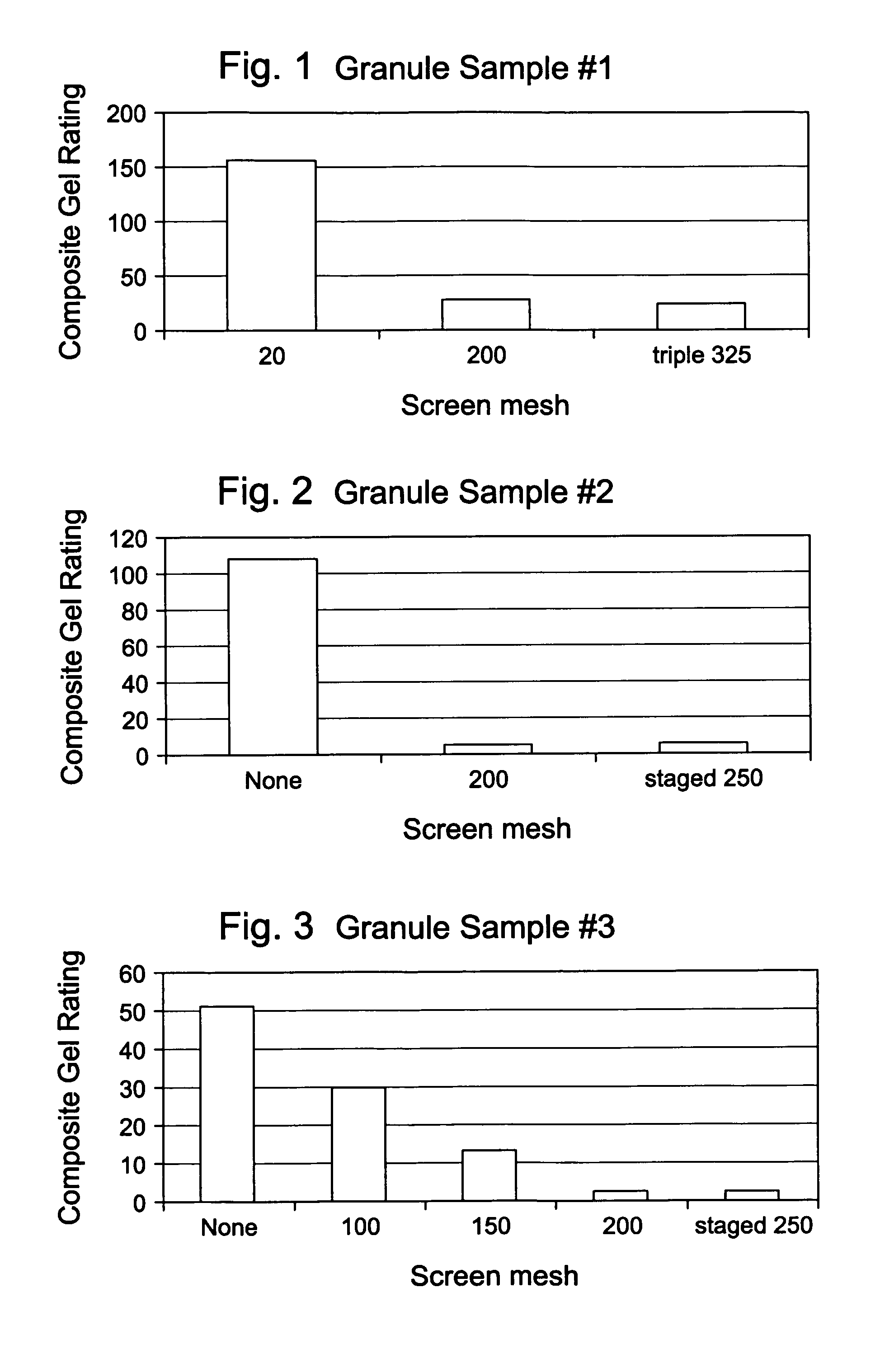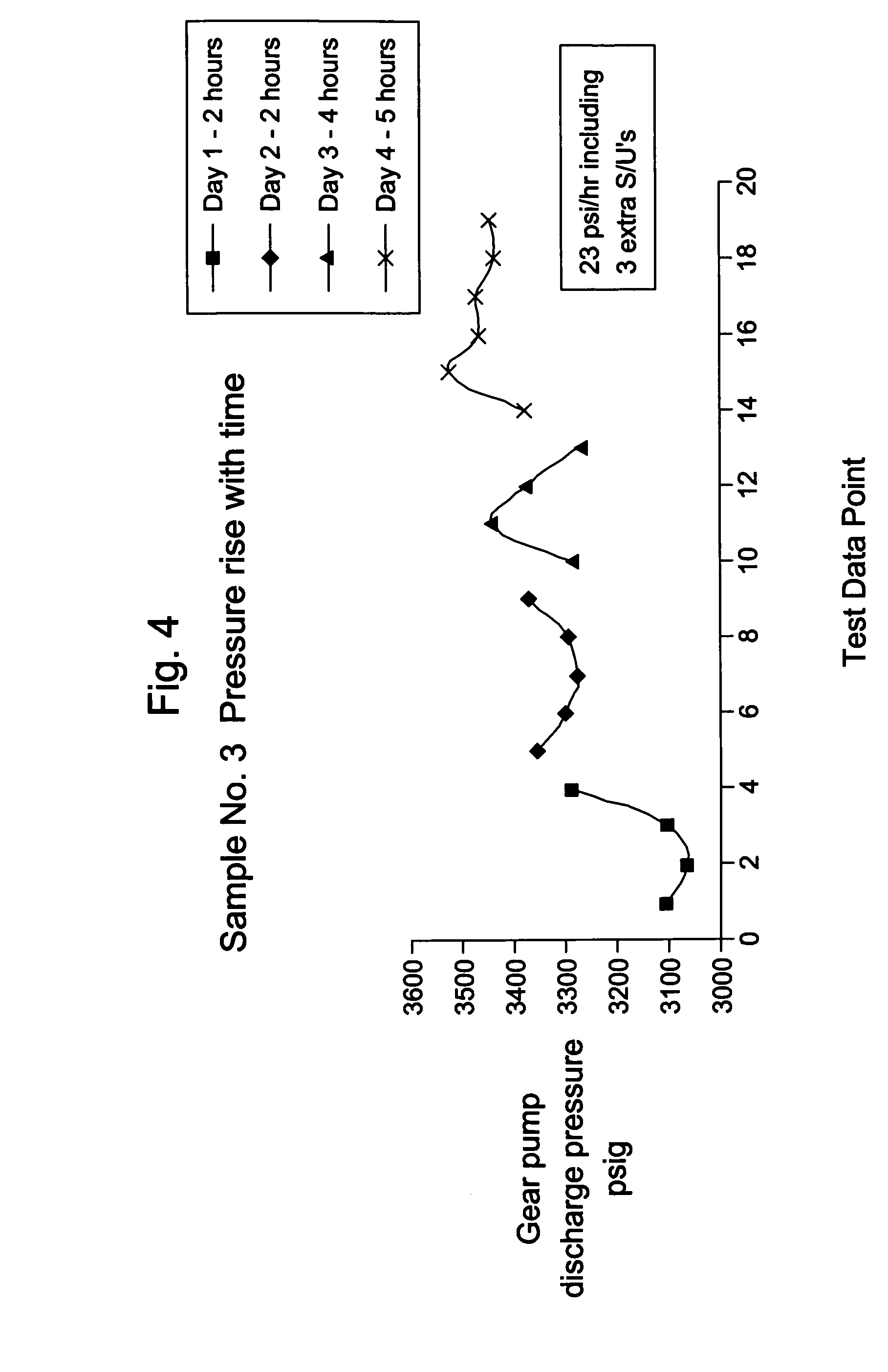Method of reducing gels in polyolefins
a polyolefin and gel technology, applied in the field of reducing the number of gels in polyolefins, can solve the problems of reducing the value of these films, affecting the marketability of films, and common presence of gels
- Summary
- Abstract
- Description
- Claims
- Application Information
AI Technical Summary
Benefits of technology
Problems solved by technology
Method used
Image
Examples
example 1
[0066]Compares 20, 200, and staged 325 mesh. Polyethylene granules were extruded into pellets either without any additives, or and blended with the following additives (“Formula A”):
[0067]
Irganox-10100.1500 wt %Irgafos-1680.1500 wt %Zinc Stearate0.0500 wt %
These pellets were used to form the films. General conditions for the extrusion into pellets are as follows:
[0068]Barrel temperature set point, 180° C.
[0069]Ambient feed temperature.
[0070]Less than 1% oxygen.
[0071]Mixer speed, 220 rpm.
[0072]Mixer feed rate, 410 lbs / hr.
[0073]Gate position, 5%.
[0074]Melt pump suction pressure, 7 psig.
[0075]Screen changer with a 4.5 inch diameter the breaker plate.
[0076]See Tables 1 and 2 for the conditions of pelletizing and film extrusions, respectively. FIG. 1 shows the gel count results. Data for 20 mesh were from a single condition, data for 200 mesh are the average of 8 conditions and 8 gels counts, data for triple 325 mesh are the average of 2 conditions and 2 gel counts. See Table 1 for an ex...
example 2
[0078]Compares no screen, 200 mesh, and staged 250 mesh. See Example 1 for a description of the additives used to form the pellets and general extrusion conditions. All data are from single extended extrusion conditions. See Tables 3 and 4 for the conditions of pelletizing and film extrusions, respectively (“G / P” refers to gear pump). FIG. 2 shows the gel count results. Surprisingly, a single 200 mesh screenpack (20 / 100 / 200 / 100 / 20 mesh) reduced gels as well as a screenpack with two 250 mesh screens (20 / 100 / 250 / 100 / 250 / 100 / 20 mesh).
example 3
[0079]Compares no screen, 100, 150, 200, and staged 250 mesh. See Example 1 for a description of the additives used to form the pellets and general extrusion conditions. All data are from single extended extrusion conditions. 100 and 150 mesh performed surprisingly well. See Tables 5 and 6 for the conditions of pelletizing and film extrusions, respectively. FIG. 3 shows the gel count results.
PUM
| Property | Measurement | Unit |
|---|---|---|
| density | aaaaa | aaaaa |
| size | aaaaa | aaaaa |
| density | aaaaa | aaaaa |
Abstract
Description
Claims
Application Information
 Login to View More
Login to View More - R&D
- Intellectual Property
- Life Sciences
- Materials
- Tech Scout
- Unparalleled Data Quality
- Higher Quality Content
- 60% Fewer Hallucinations
Browse by: Latest US Patents, China's latest patents, Technical Efficacy Thesaurus, Application Domain, Technology Topic, Popular Technical Reports.
© 2025 PatSnap. All rights reserved.Legal|Privacy policy|Modern Slavery Act Transparency Statement|Sitemap|About US| Contact US: help@patsnap.com



